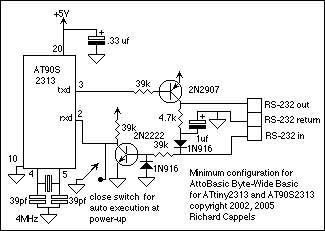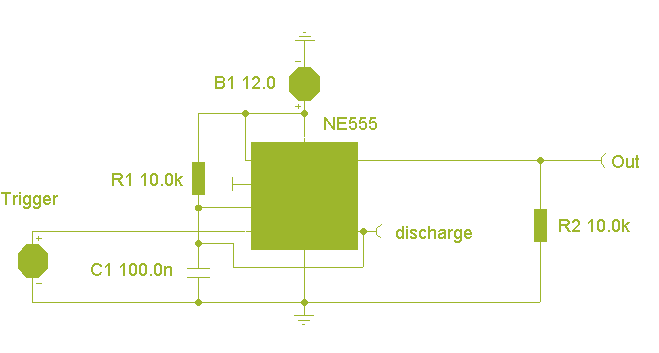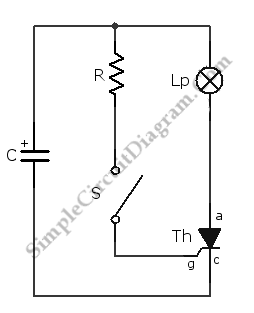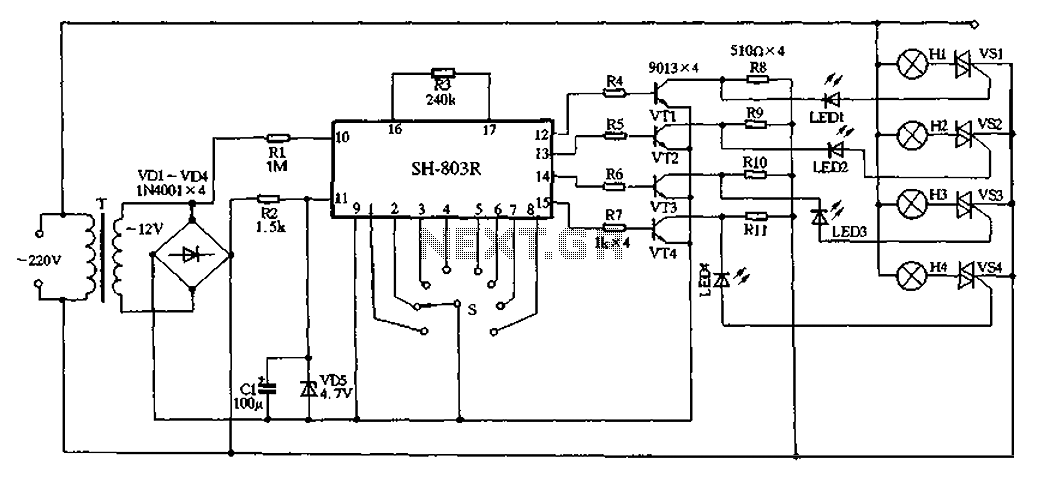
MC81 holiday lights ASIC
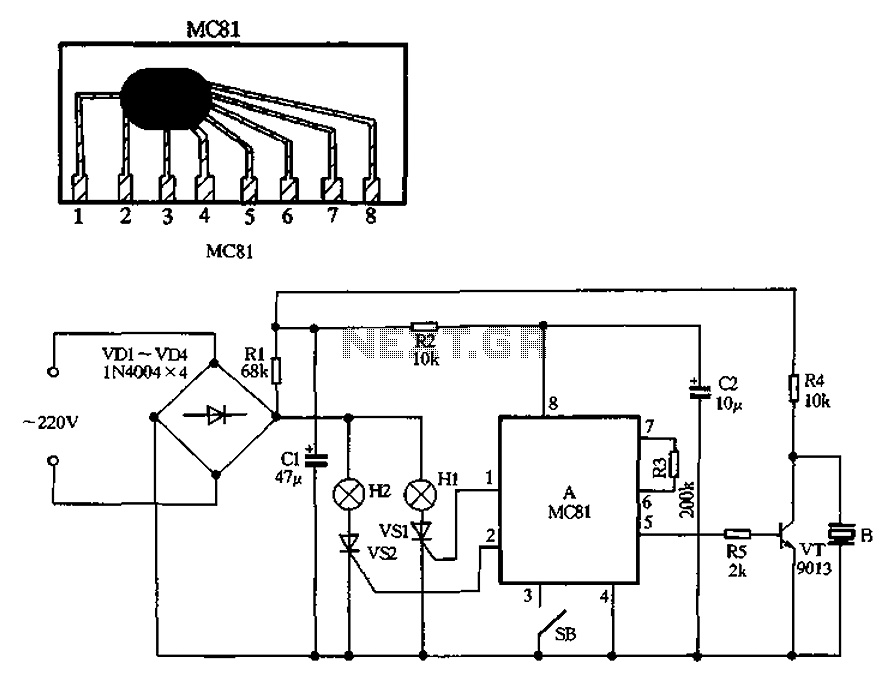
A 220V AC power supply is utilized with a VDI ~ VD4 bridge rectifier, which provides electricity to the lights Hl and H2. The circuit includes two resistors, Rl and R2, that act as current-limiting components for the capacitors C1 and C2, which serve as filters in the power supply. The internal MC81 regulators are designed to support the external circuit without requiring an additional regulator, although a current-limiting resistor must be added. The circuit features a manifold that directly drives SCRs VSI and VZ to control the flashing of lights Hl and H2. A 5-pin output is used for music signal amplification through an external transistor (VT) to drive a piezoelectric ceramic speaker (B) for sound production. To enhance the volume of the piezoelectric ceramics, the circuit employs only R1 as a resistance for voltage supply. There is no lock button switch (SB); pressing the button changes the light and music settings, allowing for volume adjustments between large, medium, and small without specific selection.
A 220V AC power supply is integrated into the circuit, utilizing a VDI ~ VD4 bridge rectifier to convert the AC voltage into a usable DC format. This rectified voltage powers two indicator lights, Hl and H2, which serve as visual signals within the system. The inclusion of resistors Rl and R2 is critical, as they limit the current flowing to the capacitors C1 and C2. These capacitors function as filters in the power supply, smoothing out voltage fluctuations and ensuring stable operation.
The internal MC81 regulators are a notable feature, as they allow the circuit to function effectively without necessitating an external voltage regulator. However, for optimal performance, it is recommended to include a current-limiting resistor to prevent excessive current from damaging the components.
The circuit design incorporates a manifold that drives SCRs (Silicon Controlled Rectifiers) VSI and VZ, which are responsible for controlling the flashing of the indicator lights. This setup allows for dynamic light patterns that can enhance the visual appeal of the circuit.
For audio output, a 5-pin connection is utilized to amplify the music signal through an external transistor (VT). This transistor drives a piezoelectric ceramic speaker (B), which produces sound. The circuit is configured to enhance the sound volume of the piezoelectric ceramics by utilizing resistor R1 as a voltage supply, ensuring that the sound output meets the desired specifications.
The user interface includes a button switch (SB) that does not lock, allowing users to change the light and music settings with each press. This feature provides flexibility in adjusting the volume levels between large, medium, and small settings, enhancing the user experience by allowing for immediate changes without the need for specific selection mechanisms. Overall, this circuit effectively combines visual and auditory elements, making it suitable for various applications requiring synchronized light and sound output.220V AC by VDI ~ VD4 bridge rectifier, lights the way for Hl, H2 electricity, another pass Rl, R2 two resistors buck, limiting the capacitor CI, C2 filter manifold A power supp ly (due to internal MC81 Regulators have been, so the external circuit without providing the regulator, but the need to add a current limiting resistor buck). Manifold l, 2 feet directly drive SCR VSI, vsz to control lights flashing string Hl and H2. 5-pin output music signal amplification through external transistor VT to drive the piezoelectric ceramic hair B sound.
To increase the sound volume of piezoelectric ceramics, the power transistor using only R1 a resistance voltage supply. SB no lock button switch, each press to change the light-hop music with the size, can sound large, medium and small between no choice.
A 220V AC power supply is integrated into the circuit, utilizing a VDI ~ VD4 bridge rectifier to convert the AC voltage into a usable DC format. This rectified voltage powers two indicator lights, Hl and H2, which serve as visual signals within the system. The inclusion of resistors Rl and R2 is critical, as they limit the current flowing to the capacitors C1 and C2. These capacitors function as filters in the power supply, smoothing out voltage fluctuations and ensuring stable operation.
The internal MC81 regulators are a notable feature, as they allow the circuit to function effectively without necessitating an external voltage regulator. However, for optimal performance, it is recommended to include a current-limiting resistor to prevent excessive current from damaging the components.
The circuit design incorporates a manifold that drives SCRs (Silicon Controlled Rectifiers) VSI and VZ, which are responsible for controlling the flashing of the indicator lights. This setup allows for dynamic light patterns that can enhance the visual appeal of the circuit.
For audio output, a 5-pin connection is utilized to amplify the music signal through an external transistor (VT). This transistor drives a piezoelectric ceramic speaker (B), which produces sound. The circuit is configured to enhance the sound volume of the piezoelectric ceramics by utilizing resistor R1 as a voltage supply, ensuring that the sound output meets the desired specifications.
The user interface includes a button switch (SB) that does not lock, allowing users to change the light and music settings with each press. This feature provides flexibility in adjusting the volume levels between large, medium, and small settings, enhancing the user experience by allowing for immediate changes without the need for specific selection mechanisms. Overall, this circuit effectively combines visual and auditory elements, making it suitable for various applications requiring synchronized light and sound output.220V AC by VDI ~ VD4 bridge rectifier, lights the way for Hl, H2 electricity, another pass Rl, R2 two resistors buck, limiting the capacitor CI, C2 filter manifold A power supp ly (due to internal MC81 Regulators have been, so the external circuit without providing the regulator, but the need to add a current limiting resistor buck). Manifold l, 2 feet directly drive SCR VSI, vsz to control lights flashing string Hl and H2. 5-pin output music signal amplification through external transistor VT to drive the piezoelectric ceramic hair B sound.
To increase the sound volume of piezoelectric ceramics, the power transistor using only R1 a resistance voltage supply. SB no lock button switch, each press to change the light-hop music with the size, can sound large, medium and small between no choice.


